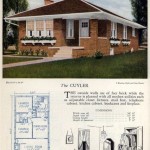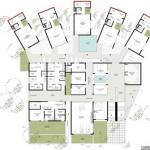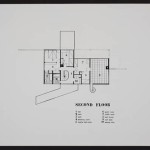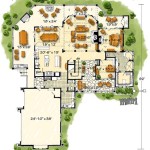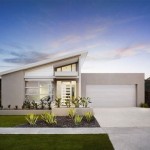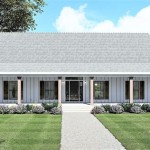Storage Container House Floor Plans: Maximizing Space and Functionality
Storage container homes are gaining popularity as a sustainable, affordable, and aesthetically interesting alternative to traditional housing. One of the most critical aspects of designing a successful container home is the floor plan. It dictates how the space is used, the flow between rooms, and the overall livability of the structure. Careful consideration must be given to the dimensions of the containers, the placement of doors and windows, and the integration of essential utilities.
The inherent modularity of shipping containers allows for a wide range of design possibilities, from single-container minimalist dwellings to multi-container complexes that rival traditional homes in size and complexity. Understanding the available space within a standard shipping container and how alterations can impact structural integrity is paramount before embarking on any design project. This article will explore key considerations for designing effective storage container house floor plans, highlighting various layouts and strategies for optimizing space and functionality.
Understanding Standard Container Dimensions and Their Impact on Floor Plan Design
Shipping containers come in standard sizes, most commonly 20-foot and 40-foot lengths. A standard 20-foot container measures approximately 20 feet long, 8 feet wide, and 8.5 feet high. A 40-foot container, on the other hand, is approximately 40 feet long, 8 feet wide, and 8.5 feet high. High cube containers offer an additional foot in height, making them a preferable choice for those seeking more headroom. The internal dimensions are slightly smaller due to the thickness of the container walls.
These dimensions significantly influence the design process. The narrow width of a single container can pose challenges when planning interior layouts. Long, narrow spaces may feel cramped, especially without careful consideration of natural light and furniture placement. Combining multiple containers provides more flexibility, allowing for the creation of larger, more open spaces. However, integrating multiple containers requires structural modifications, which must be carefully engineered to ensure the stability of the building.
The positioning of doors and windows is also dictated by the container’s existing structure. Cutting openings into the container walls can compromise its structural integrity, requiring reinforcement around the openings. Strategic placement of doors and windows is crucial for maximizing natural light, ventilation, and the overall aesthetic appeal of the home. Consideration should be given to the prevailing wind direction and sun exposure when deciding on the location of these features.
When designing a floor plan, it is essential to account for the thickness of insulation. Adding insulation to the interior walls reduces the usable space within the container. The type of insulation used will also impact the overall footprint of the finished space. Spray foam insulation, for example, is a relatively thin option, while rigid foam boards may require more space. Proper planning will ensure that the insulation effectively regulates temperature without significantly reducing the interior living area.
Accessibility is another important factor. Wheelchair accessibility requires careful consideration of door widths, hallway dimensions, and the placement of fixtures in bathrooms and kitchens. Building codes may dictate specific requirements for accessibility, so it is important to consult with local authorities and building professionals to ensure compliance. A well-designed floor plan will prioritize accessibility and inclusivity for all occupants.
Optimizing Space in Small Container Homes: Strategies for Efficient Living
Designing a floor plan for a single-container home requires careful consideration of every square inch. The limited space necessitates creative solutions for maximizing functionality and creating a comfortable living environment. Multifunctional furniture, such as sofa beds, folding tables, and storage ottomans, can help to make the most of the available space. Vertical storage solutions, such as shelving units and wall-mounted cabinets, can also help to keep the floor area clear and uncluttered.
Open-plan layouts are often favored in small container homes, as they create a sense of spaciousness and allow for better flow between different living areas. Combining the living room, kitchen, and dining area into a single open space can make the container feel much larger than it actually is. However, careful consideration must be given to zoning and defining different areas within the open plan. Rugs, furniture placement, and changes in flooring can all be used to visually separate different zones.
Bathrooms are typically the smallest rooms in a container home, so careful planning is essential. Compact fixtures, such as wall-mounted toilets and corner sinks, can help to save space. Shower-tub combinations are a practical option for smaller bathrooms, as they allow residents to enjoy both showering and bathing within a limited footprint. Adequate ventilation is crucial in bathrooms to prevent moisture buildup and mold growth.
Kitchens in small container homes require careful planning to ensure that all essential appliances and storage are accommodated. Compact appliances, such as induction cooktops and integrated refrigerators, can help to save space. Wall-mounted cabinets and open shelving can provide ample storage without taking up valuable floor space. A well-designed kitchen will be both functional and aesthetically pleasing, even in a small container home.
Natural light plays a crucial role in making a small container home feel more spacious and inviting. Large windows and skylights can bring in plenty of natural light, making the interior feel brighter and more open. Strategically placed mirrors can also help to reflect light and create the illusion of more space. Light-colored walls and flooring can further enhance the effect of natural light. A well-lit container home will feel significantly larger and more comfortable than a dark and cramped one.
Designing Complex Container Homes: Integrating Multiple Containers and Creating Functional Zones
Combining multiple containers offers greater design flexibility and allows for the creation of more complex and spacious homes. When designing a multi-container home, careful consideration must be given to the arrangement of the containers and the connections between them. The layout should prioritize functionality, flow, and the creation of distinct living zones.
Stacking containers vertically can create multi-story homes, maximizing the use of available land. However, stacking containers requires careful engineering and reinforcement to ensure the structural integrity of the building. The weight of the upper containers must be adequately supported by the lower containers, and the foundation must be strong enough to bear the entire load. A structural engineer should be consulted to ensure that the design meets all relevant building codes and safety standards.
Containers can also be arranged horizontally, creating a wider footprint. This layout allows for the creation of larger, more open living spaces. Connecting containers horizontally requires cutting openings in the container walls and reinforcing the surrounding structure. The size and placement of these openings will impact the flow between rooms and the overall aesthetic of the home.
Zoning is an important consideration when designing a multi-container home. Different areas of the home should be clearly defined and separated, creating distinct spaces for living, sleeping, working, and entertaining. The layout should also consider the needs of the occupants, ensuring that each member of the household has their own private space. A well-zoned home will be both functional and comfortable for all residents.
Outdoor spaces can be seamlessly integrated into the design of a multi-container home. Decks, patios, and balconies can extend the living area and provide opportunities for outdoor relaxation and entertainment. Rooftop gardens can add greenery and biodiversity to the home, while also providing insulation and reducing stormwater runoff. A well-designed outdoor space can enhance the overall livability and aesthetic appeal of a container home.
The integration of utilities, such as plumbing, electrical, and HVAC systems, is a critical aspect of designing a container home. These systems must be carefully planned and installed to ensure that the home is comfortable, safe, and energy-efficient. The placement of plumbing fixtures, electrical outlets, and HVAC units should be considered early in the design process to avoid costly modifications later on. A well-integrated utility system will be both functional and aesthetically pleasing.

Container Homes Floorplans 4 Casa Contenedor Planos Casas Contenedores De Pequeñas Modernas

Container Home Floor Plans Types Examples Considerations Cedreo

Container Home Floor Plans Structures Layouts More Ideas

20 Foot Container Home Floor Plans

3 Bed Container Home Floor Plans

Efficient Container Floor Plan Ideas Inspired By Real Homes House Plans Design Interior

Design Your Own Container Home Start Now Premier Box

Container Home Floor Plans Structures Layouts More Ideas

Container Home 6 Floorplan Design Plans House

Container Home Plans Blueprints Housing

